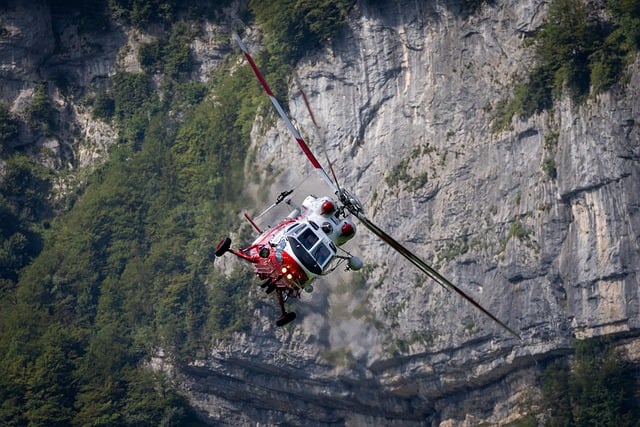Flashlights for emergency preparedness are essential tools for ensuring safety and visibility during unexpected events such as power outages or natural disasters. To maintain their effectiveness, it's crucial to select high-quality models with reliable battery systems like rechargeable lithium-ion batteries, weatherproof designs, and locking battery compartments to conserve power. Regular upkeep, including battery checks, replacements every few years, and cleaning of the lens and reflector, is necessary to ensure dependability. Keeping multiple flashlights in accessible locations and familiarizing yourself with their operations can significantly enhance your ability to navigate through emergencies. Diversity in your lighting options, whether they're powered by disposable batteries, rechargeable units, or even crank-powered models, will provide you with the right tool for any situation. Including flashlights in your emergency kit is a critical step in being prepared for any crisis scenario, ensuring that you have an indispensable light source when you need it most.
In the event of a crisis, whether it’s a power outage or a natural disaster, reliable lighting can be a matter of life and death. This article illuminates the critical role that flashlights for emergency preparedness play in such scenarios. We’ll explore their indispensability across various emergency situations, key features to prioritize when selecting a high-quality emergency flashlight, and how to maintain these tools to ensure they’re ready when needed most. From understanding their importance to integrating them into a comprehensive preparedness plan, this guide will shed light on the practical aspects of using flashlights to not only navigate darkness but also enhance personal and community safety during crises.
- Understanding the Importance of Flashlights in Emergency Situations
- Key Features to Look for in a High-Quality Emergency Flashlight
- Types of Emergency Scenarios Where Flashlights Are Indispensable
- The Role of Portable Lighting in Navigating Darkness During a Crisis
- Battery Considerations for Long-Term Power in Flashlights
- Strategies for Using Flashlights to Enhance Personal and Community Safety
- Flashlight Maintenance: Ensuring Your Light Stays Reliable in an Emergency
- Integrating Flashlights into Your Comprehensive Emergency Preparedness Plan
Understanding the Importance of Flashlights in Emergency Situations

Flashlights play a pivotal role in emergency preparedness, serving as reliable sources of illumination when power outages or other crises disrupt normal lighting. In scenarios where visibility is critical for safety and decision-making, flashlights provide a practical solution to navigate through the darkness. They are compact, durable, and can often be operated with minimal effort, even when hands are cold or shaking due to stress or environmental conditions. A well-stocked emergency kit should include at least one high-quality flashlight, as they can be lifesaving tools during blackouts, natural disasters, or when searching for trapped individuals. The light emitted by these devices not only helps in avoiding obstacles and potential hazards but also in signaling for help. Furthermore, the convenience of flashlights extends beyond personal safety; they are instrumental in aiding rescue operations and can be used to signal rescuers from a distance, increasing the chances of timely assistance. The importance of including flashlights in emergency preparedness cannot be overstated, as they are an indispensable component in ensuring one’s safety during unexpected or adverse situations.
Key Features to Look for in a High-Quality Emergency Flashlight
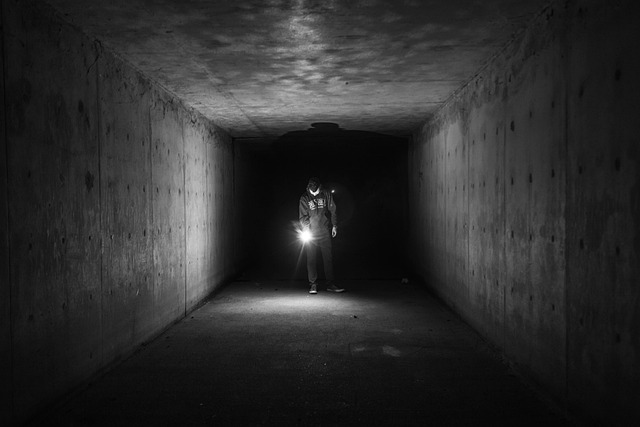
When selecting a flashlight designed for emergency preparedness, durability and reliability are paramount. A high-quality emergency flashlight should be constructed with robust materials that can withstand harsh conditions and frequent use. Look for models made from aircraft-grade aluminum or other impact-resistant materials that can survive accidental drops without compromising performance. Additionally, the light source within the flashlight should be of high intensity, typically offered by LED technology, which provides a bright and focused beam essential for signaling or navigating in low-visibility environments.
Furthermore, consider the power source of your emergency flashlight. A model with rechargeable batteries offers the convenience of repeated use without the need to constantly replenish disposable cells. High-end flashlights often come with a battery level indicator, ensuring you’re aware of when the light needs to be charged. Lumens output is another critical feature; a higher lumens rating indicates a brighter beam, which can be crucial for illuminating large areas or for signaling to rescuers over long distances. Lastly, weatherproofing or waterproofing is a vital characteristic, as emergencies can occur in all conditions. Opt for a flashlight with an IP (Ingress Protection) rating of at least IP65 for moderate water resistance, or higher for more extreme environments. With these features in mind, the right emergency flashlight will serve as a reliable companion in crisis scenarios.
Types of Emergency Scenarios Where Flashlights Are Indispensable

In a multitude of emergency scenarios, flashlights for emergency preparedness serve as indispensable tools for safety and navigation. During power outages, a reliable flashlight can illuminate darkened homes, prevent falls, and facilitate the safe operation of devices like generators or manual appliances. Natural disasters such as earthquakes, tornadoes, or hurricanes can leave areas without electricity for extended periods, making flashlights essential for immediate safety measures as well as for ongoing tasks in the aftermath. Additionally, in situations where visibility is critical, such as during a search and rescue operation post-disaster, flashlights enable rescuers to locate individuals who may be trapped under debris or lost in darkened environments. Their compact nature allows individuals to carry them easily, ensuring they have a reliable light source ready for use whenever and wherever needed.
In scenarios where the safety of oneself or others is at stake, flashlights become even more critical. For instance, during a wildfire evacuation, a flashlight can guide the way through smoke-filled areas or low-visibility conditions at night. In medical emergencies or when providing first aid, a flashlight helps healthcare providers clearly see their work environment or patient, which is crucial for administering care effectively. Flashlights also play a vital role in outdoor survival situations, such as getting lost while hiking or camping. They can signal rescuers from a distance, create a beacon of light in the darkness, and help users navigate through challenging terrain, thus being indispensable components of one’s emergency preparedness kit.
The Role of Portable Lighting in Navigating Darkness During a Crisis
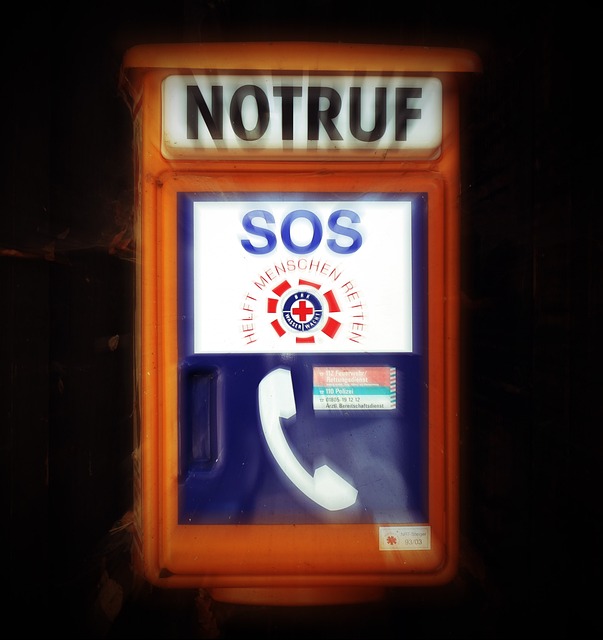
In crisis scenarios, visibility can be a matter of life and death. Portable lighting solutions, such as flashlights for emergency preparedness, play a pivotal role in illuminating the darkness that often accompanies emergencies. These compact devices are designed to endure the rigors of unexpected situations, providing reliable and directed light when other sources may be unavailable or unreliable. During a crisis, whether it’s a power outage due to natural disasters like hurricanes or earthquakes, or in situations where navigation is necessary under cover of night, flashlights are indispensable tools for safety and orientation. They enable individuals to move with confidence, avoiding hazards and potential dangers, while also facilitating critical tasks such as first aid, searching for supplies, or navigating to safer ground. The effectiveness of these portable lights lies in their durability, ease of use, and the immediate impact they have on enhancing visibility in challenging environments. Flashlights for emergency preparedness are not just a safety measure but a strategic asset in crisis situations, ensuring that those affected can see their path forward, quite literally.
The selection of a flashlight for emergency preparedness should consider several factors: brightness, battery life, durability, and versatility. High-lumen models offer intense beams that can illuminate vast areas or serve to signal for help over long distances. Additionally, the best models are constructed with high-quality materials that can withstand harsh conditions, such as water and impact resistance. Some flashlights come equipped with multiple settings, including strobe functions that can disorient an assailant in self-defense situations or conserve battery life when a dimmer light is sufficient. The versatility of these devices means they can be integrated into broader emergency kits alongside other essential supplies, ensuring that individuals are prepared for unexpected darkness in any crisis scenario. Flashlights for emergency preparedness thus stand as a testament to the importance of thoughtful planning and the inclusion of robust, multifunctional tools in one’s disaster response strategy.
Battery Considerations for Long-Term Power in Flashlights
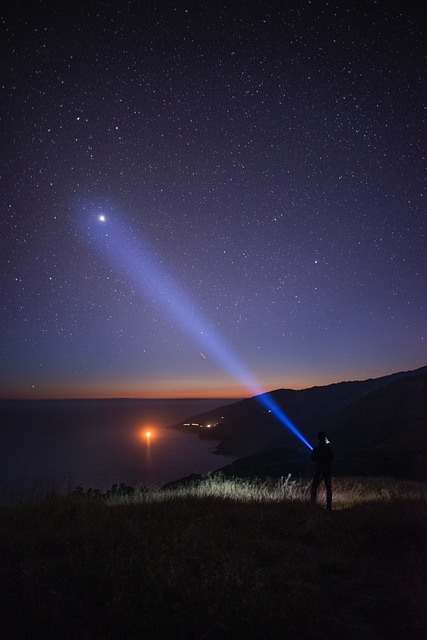
When preparing for emergency scenarios, flashlights serve as indispensable tools, offering reliable illumination in the absence of electricity or during power outages. In these situations, the longevity and reliability of a flashlight’s battery are paramount. For those who prioritize long-term power solutions in their flashlights for emergency preparedness, there are several key considerations to ensure optimal performance when it matters most. Firstly, the type of battery used is critical; rechargeable lithium-ion batteries often provide a balance between longevity and capacity, making them a popular choice for their ability to hold a charge over long periods. Users should also consider the flashlight’s battery compartment design, as some are more weatherproof or have locking mechanisms to prevent accidental activation and conserve power. Additionally, the quality of the battery connector and insulation is crucial, as these can affect battery life and the flashlight’s resistance to environmental factors. To maintain peak performance, it’s advisable to store batteries at room temperature and to fully charge or discharge them before long-term storage to prolong their lifespan. Regularly inspecting and replacing batteries every few years, even if they still hold a charge, can ensure that your flashlight is ready when emergency strikes. Flashlights for emergency preparedness, equipped with thoughtfully selected batteries and robust design features, are invaluable assets in navigating the unpredictability of crisis scenarios.
Strategies for Using Flashlights to Enhance Personal and Community Safety

In crisis scenarios, flashlights for emergency preparedness are indispensable tools for enhancing personal and community safety. When disaster strikes, whether it’s a power outage due to a natural disaster or a man-made emergency, reliable lighting becomes crucial for navigation and safety assessments. Flashlights not only illuminate dark environments but also signal for help. They can be used to navigate through the aftermath of a catastrophe, avoid hazards, and communicate with others. Individuals should consider keeping multiple flashlights readily accessible, as they may be required simultaneously by different members of a household or community. Strategies for effective use include having a clear plan for where flashlights are stored, how they will be distributed in an emergency, and training on their operation, including replacement of batteries and bulbs. Moreover, establishing a lighting system that can guide people to safety points, such as exits or shelters, is essential. Flashlights should also be part of a broader disaster response plan, where they support communication between rescuers and those in need of assistance, potentially saving lives. In community settings, coordinated use of flashlights can enhance visibility over larger areas, aiding in search and rescue operations. By planning ahead and integrating flashlights into a comprehensive emergency preparedness kit, individuals and communities alike can significantly increase their safety and resilience during unexpected crises.
When preparing for emergencies, it’s important to choose flashlights that are durable, reliable, and easy to operate under stress. They should be equipped with long-lasting batteries or rechargeable power sources and designed to withstand harsh conditions. In addition to personal preparedness, communities can implement strategies such as public lighting plans that utilize flashlights in a coordinated manner. This approach can be particularly effective in densely populated areas where communication and visibility are key components of an emergency response. Flashlights with high lumen outputs can illuminate large areas quickly, making them ideal for signaling or lighting up common spaces. By incorporating flashlights into community preparedness drills and by ensuring that all members have access to one, communities can foster a collective readiness that significantly enhances safety during crises.
Flashlight Maintenance: Ensuring Your Light Stays Reliable in an Emergency
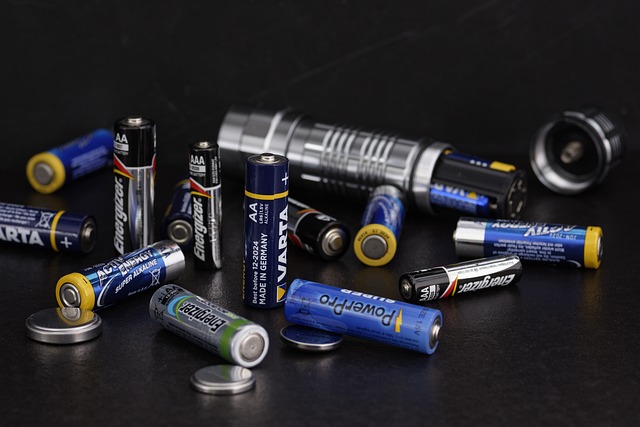
When disaster strikes, having a reliable flashlight can be the difference between safety and peril. Flashlights for emergency preparedness are indispensable tools in crisis scenarios, where consistent lighting is not only comforting but often necessary for survival. To ensure your flashlight remains a dependable companion during an emergency, routine maintenance is key. Begin by regularly inspecting your flashlight’s components. Check the battery compartment for any signs of corrosion, as this can impede power delivery and render your flashlight ineffective when you need it most. Replace batteries according to the manufacturer’s guidelines or before storage, as old or depleted batteries may fail to operate in cold conditions or when needed urgently. Examine the lens and reflector for scratches or damage that can scatter light and diminish visibility. Clean the glass carefully with a soft cloth, avoiding harsh chemicals that could weaken the material. Ensure that all parts are securely fastened; a loose connection can cause intermittent operation or complete failure. By maintaining your flashlight regularly, you’re guaranteeing its functionality when you’re in an unpredictable environment, making it an essential part of your emergency preparedness kit. Remember to store your flashlight in a cool, dry place, away from direct sunlight and extreme temperatures that can affect battery life and overall performance. With proper care and attention, your flashlight will be ready to provide illumination and help guide you through uncertain times.
Integrating Flashlights into Your Comprehensive Emergency Preparedness Plan
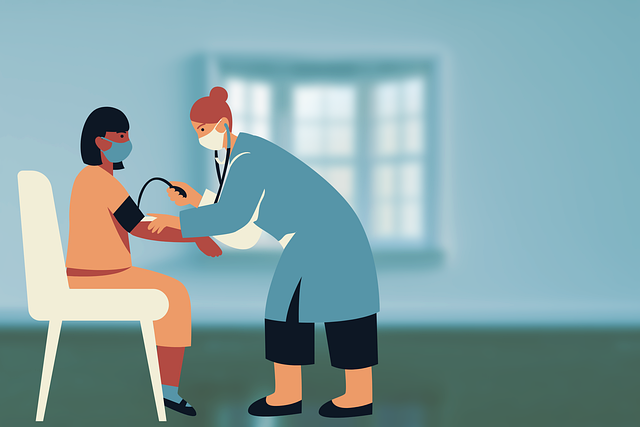
Flashlights are invaluable tools for navigating through crisis scenarios, offering a dependable source of illumination when electrical power is compromised or unavailable. Integrating flashlights into your comprehensive emergency preparedness plan can significantly enhance your ability to respond effectively to unexpected events, such as power outages, natural disasters, or emergencies occurring in unlit environments. Consider the types of situations you might face and select flashlights that suit those conditions best. For instance, a durable, high-intensity model with a long battery life is ideal for outdoor nighttime navigation, while compact, easily portable options are perfect for keeping in your vehicle or at your bedside.
When incorporating flashlights into your emergency kit, ensure you have multiple units and diverse lighting solutions, including those powered by disposable batteries, rechargeables, or crank-powered models. Additionally, familiarize yourself with the operation of each device to avoid unnecessary frustration during an actual emergency. It’s also beneficial to practice using these flashlights regularly to maintain proficiency in their use. Training not only keeps your skills sharp but also helps you understand the capabilities and limitations of each light source. By making flashlights a cornerstone of your preparedness strategy, you can significantly improve your resilience and safety in crisis situations. Remember to store your flashlights in easily accessible locations and to replace batteries regularly to ensure they are ready when needed.
In conclusion, flashlights for emergency preparedness are indispensable tools in a crisis. Their ability to illuminate dark environments not only preserves visibility but also plays a critical role in ensuring safety and effective decision-making. Selecting a high-quality emergency flashlight with durable construction, reliable battery performance, and essential features such as multiple brightness settings is crucial for long-term reliability. By integrating these lights into your broader preparedness plan and maintaining them regularly, you can be confident that they will function when needed most. As the darkness of an emergency situation can test one’s resilience, a well-prepared flashlight stands as a beacon of hope and guidance. Thus, incorporating high-quality flashlights into your emergency kit is a prudent step towards safeguarding yourself and your community during unforeseen events.
